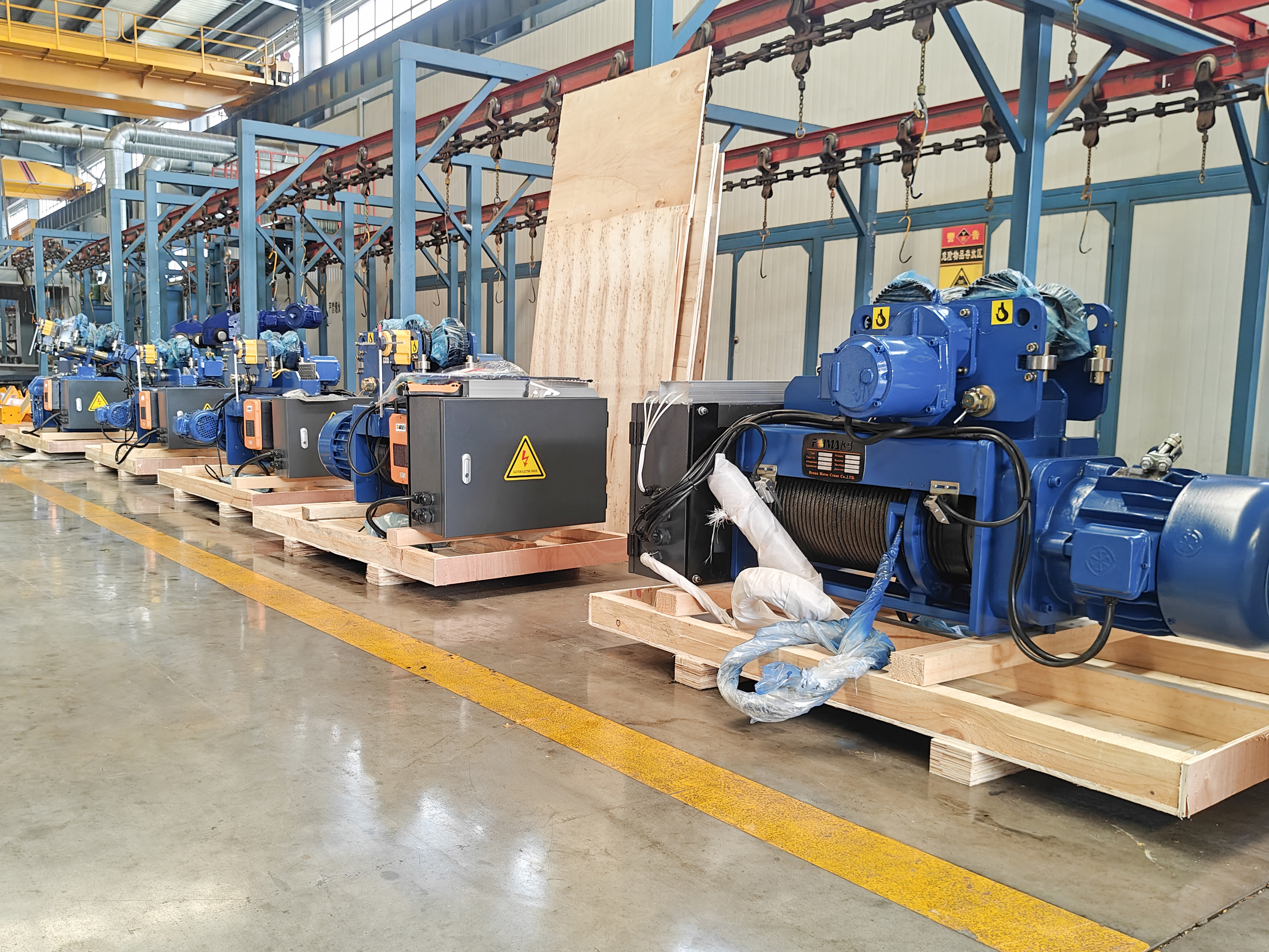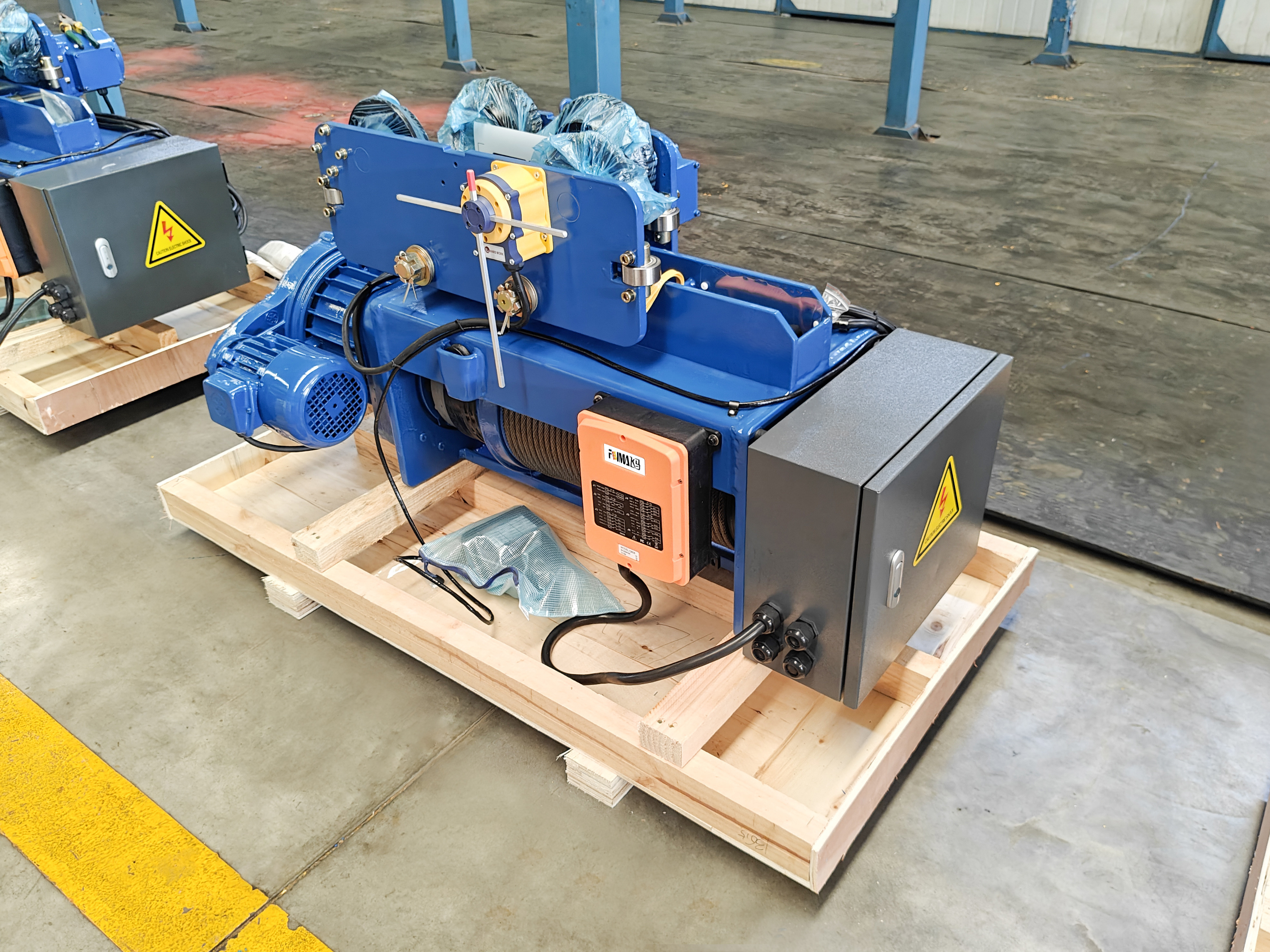【China FEIMA Foreign Trade】OHFM and FOH wire rope electric hoists continue to be shipped overseas
Release time:
24-09-20
The 12th batch of HORSE brand FOH type wire rope electric hoists (planetary type) and OHFM type wire rope electric hoists (low clearance operation type) of Henan Feima Crane Machinery Group Co., Ltd. in 2024 have been produced as scheduled in September.
The OHFM type wire rope electric hoist (low clearance operation type) has a working level of M5 and is a new type of electric hoist that is compact, lightweight, universal, energy-saving, environmentally friendly, maintenance free, and of high quality.The rated load is 3-50T, with frequency conversion and dual speed operation. The mechanism consists of a three in one reducer, dual disc electromagnetic disc brakes, weight sensors, upper and lower transmission potentiometers, overload protectors, safety monitors, collision avoidance devices, etc,It meets the requirements of production line automation, high positioning accuracy, anti sway, etc., and realizes automated unmanned remote control. It is the preferred lifting equipment for the new European style gantry crane supporting high-tech clean industry.
FOH type wire rope electric hoist (planetary type) is developed based on the introduction and digestion of advanced technology from Germany's fifth generation electric hoist. It is a low-noise, maintenance free, high-frequency lifting product urgently needed in contemporary industry.It embodies the crystallization of advanced technology and exquisite craftsmanship. Adopting innovative design concepts, combined with high-quality materials and strict production standards, it ensures that it achieves industry-leading performance, reliability, and safety.Adopting a planetary gear reducer, it has the advantages of small size, light weight, high load-bearing capacity, long service life, stable operation, low noise, large output torque, and safe and reliable performance.The upgraded rope pulley, rope guide, and electronic brake completely eliminate the common phenomena of rope disorder and top collision in traditional cranes. For frequent working conditions, it is the preferred lifting equipment.



Related Information


